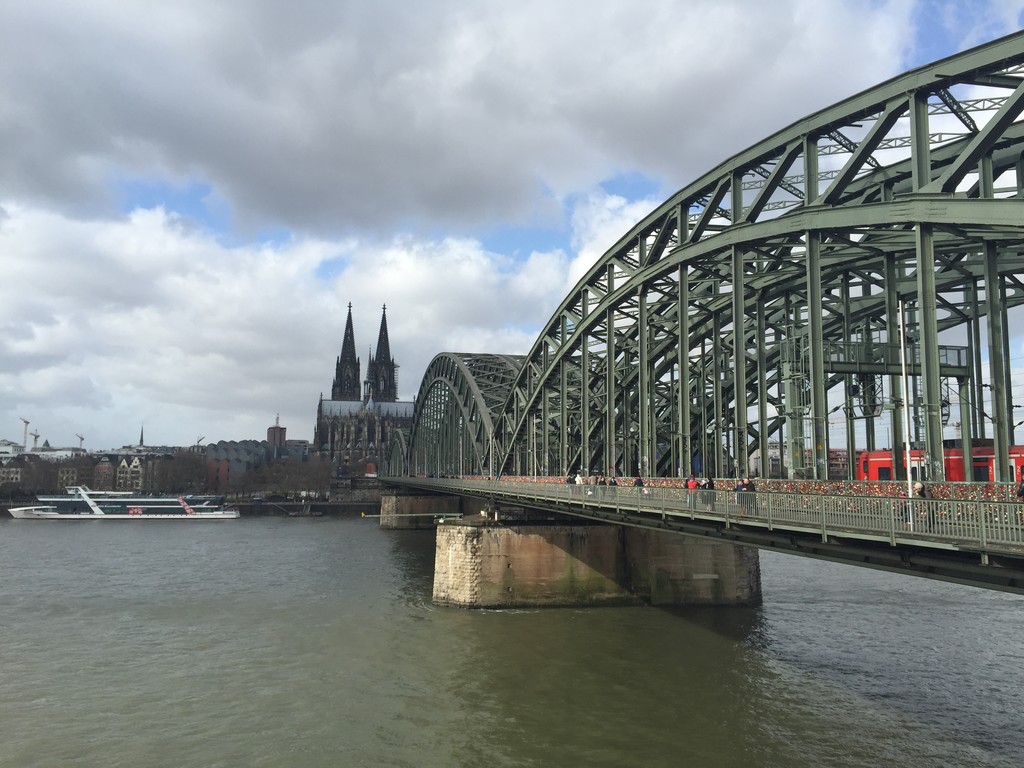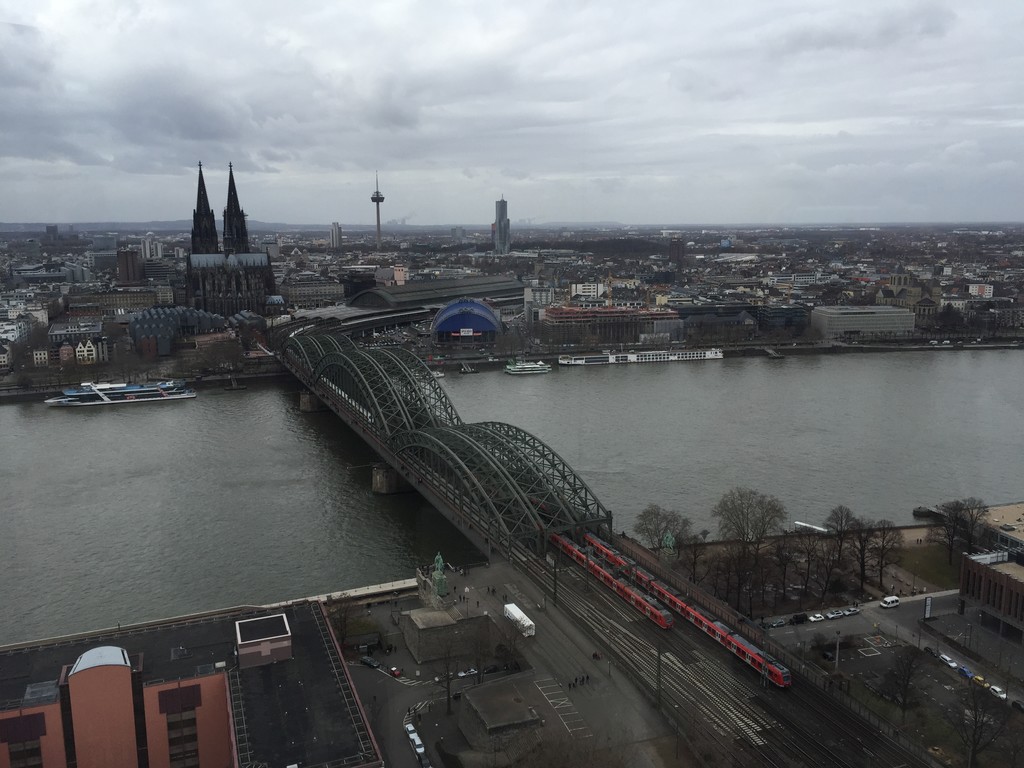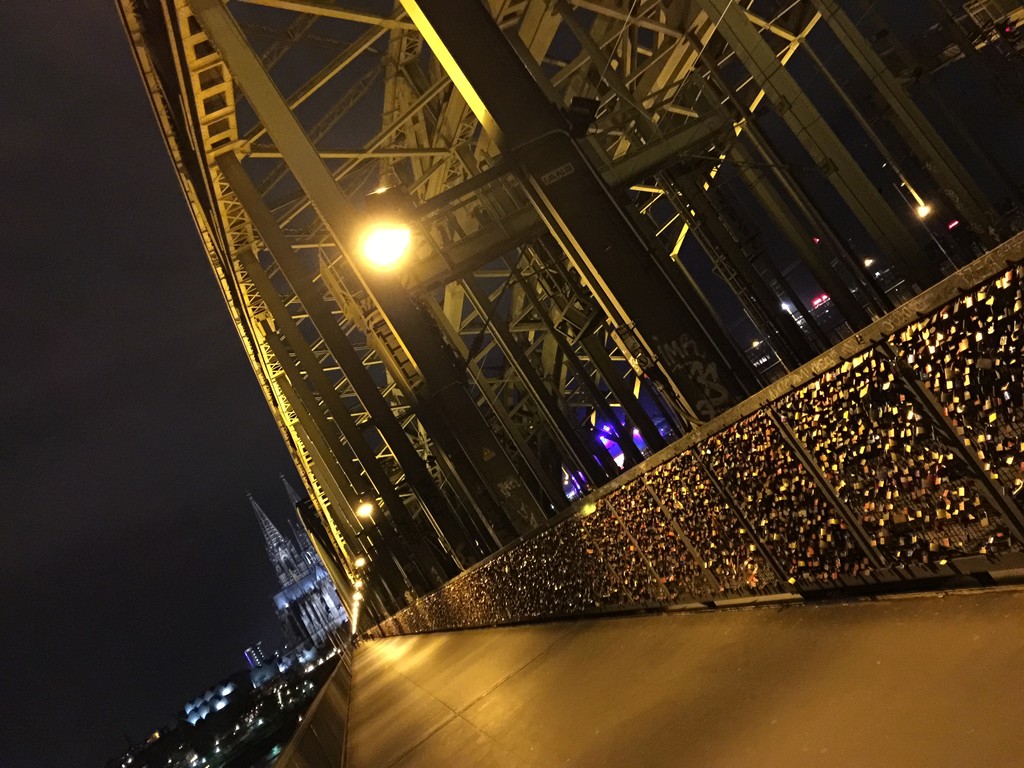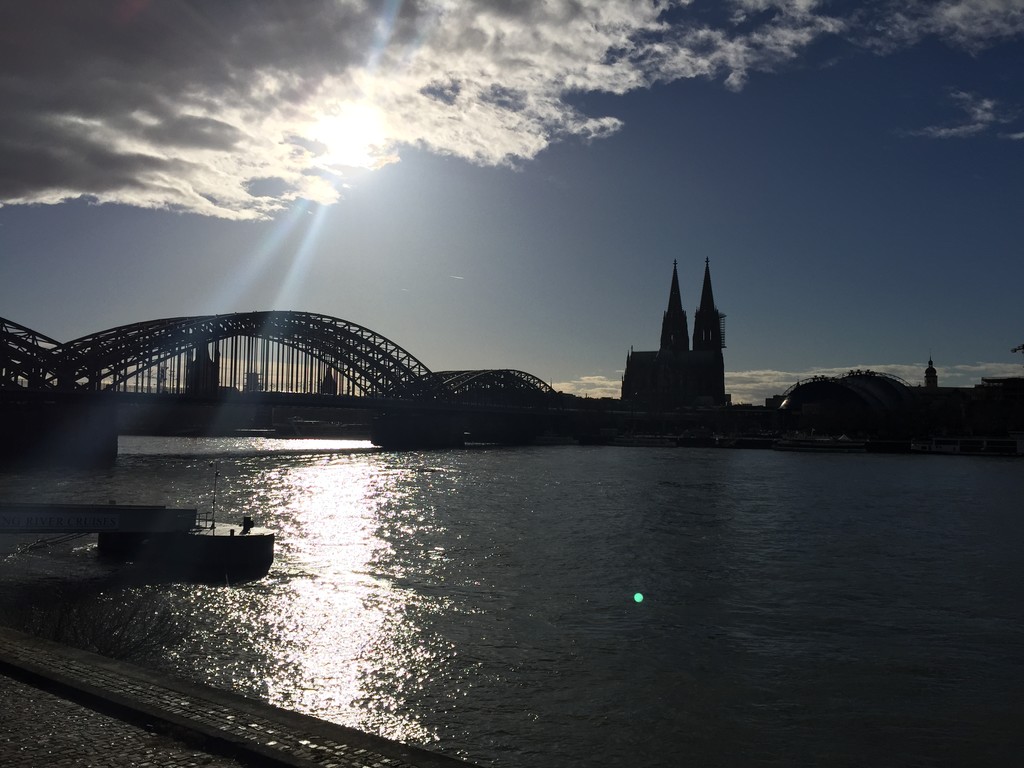Hohenzollern Bridge
- Address: 50679 Cologne, Alemania
- Tags:
 What to see Cologne,
Cologne,
Germany
What to see Cologne,
Cologne,
Germany
- Telephone: +49 221 2210
- Website: www.stadt-koeln.de
Hohenzollern Bridge

Hohenzollern Bridge, or Hohenzollernbrücke in German, is the second biggest tourist attraction in the German city of Cologne, the most densely populated city within the federal state of North-Rhine Westphalia. Of the seven bridges which cross the majestic River Rhine, Hohenzollern Bridge is the most famous for being the closest to the cathedral and for separating the industrial area from the historial area of the city. It's also the oldest bridge, built between 1907 and 1911, and is full of love locks, which I'll mention more in depth later.
First, we'll do a whistle-stop tour of the bridge's history... During the Roman period, the River Rhine marked the north east border of the Roman Empire. The river's high current meant that building bridges over it was a challenging task. This however did not prevent the Roman Emperor Julius Caesar from ordering his army to construct two bridges across the river between 53 and 55 BC to allow them to wage war on the Germanic tribes living on the other side.

The first bridge to be built across the Rhine was completed around 310 AD during the reign of Constantine the Great, and connected the city to a newly-built military camp across the river in Deutz. The wooden bridge was approximately 420 metres in length. Some surviving sections of this bridge are on display in the Römisch-Germanisches Museum (Roman-German Museum).
After the fall of the Roman Empire, another 1, 500 years passed before the construction of a new bridge was begun in the city. In 1822, a bridge made of wooden planks was constructed in the same location as the current Hohenzollernbrücke. This bridge was raised several times a day to allow boats to pass through.
In 1855, the wooden plank bridge was replaced by the Dombrücke (Cathedral Bridge), the first permanent bridge over the Rhine since the Roman period. This bridge, built using girders, was officially opened in 1859. It had two railway tracks and two car lanes. Huge, impressive and monumental Neo-Gothic towers stood at either end.

At the start of the twentieth century, the bridge had become too small for the incessant railway traffic, and as a result of this, construction of a much larger new bridge was begun in 1907. This new bridge, named Hohenzollernbrücke after the Hohenzollern dynasty, was opened in 1911 by Kaiser Wilhelm II. The bridge has four railway lanes as well as two car lanes which are framed by two iron archways. The entrances are Neo Roman in style, large and with tall towers on either side, and decorated with equestrian statues of German emperors and kings.
In 1945, at the end of the Second World War, the German army blew up all the bridges crossing the Rhine, among them Hohenzollern Bridge. Fortunately, the bridge was repaired three years later and entirely rebuilt in 1959. However, the grand entrances on either side were demolished in 1958 and never rebuilt.

Between 1985 and 1988, the bridge was renovated and extended. It is now purely a railway bridge with six tracks, and around 1, 200 trains cross over it every day due to its location close to Cologne's main train station. A pedestrian path allows visitors to walk over it and enjoy the fantastic views of the city, especially impressive by night, with the cathedral, the bridge's arches and St. Martin's Church all illuminated.
There are two equestrian statues on either side of the bridge atop large pedestals. On the Cologne side of the bridge, the statues are of Kaiser Frederick III and Kaiser Wilhelm II. Both were realised by the Prussian sculptor Louis Tuaillon. On the Deutz side of the bridge, the statues are of King Frederick William IV, realised by Gustav Blaeser, and of Kaiser Wilhelm I, created by Friedrich Drake.
The river which this magnificent bridge crosses, the River Rhine (Rhein in German, Rijn in Dutch and Rhin in French), takes its name from the Celtic word 'renos', meaning furious current, and begins at Rheinwaldhorn Glacier in the Swiss Alps and flows north and east, covering a total length of almost 1, 320 kilometres. The glacier is located in the north east, across the mountains of Andermatt village in the Uri canton. The Rhine begins with a very fast-flowing current, and though this moderates slightly in its passage through Constance (Bodensee), its waters are tumultuous until it reaches Basel in the west. The river flows beyond Bonn in Germany, and becomes the Lower Rhine, emerging in northern Germany before reaching its mouth in the North Sea. The main German cities the Rhine passes through are Cologne, Düsseldorf and Duisburg. At the Dutch border, the river divides in two: the Lek and the Waal. Rotterdam, with the main port in continental Europe, is located near to the river's mouth. The Rhine passes through Liechtenstein, Austria, Germany, France and the Netherlands. It is navigable from the North Sea to Basel, Switzerland, a distance of 800 kilometres.

With regards to the story behind the thousands of multi-coloured locks which hang on Hohenzollern Bridge, the pedestrian railings are known as the wall of 'love locks'. An endless number of lovers visit the spot every year to publicly declare their love for one another. On every lock different inscriptions can be read, in addition to drawings or decorations which the couple have added. To this date, there are over 40, 000 love locks on the bridge, the tradition only having begun recently in 2008.
The love locks have added more than two tonnes of weight to the bridge, raising the question of how much longer the city council will allow the locks to be added. Love locks have started to be banned on other bridges in Europe and beyond, such as on the Pont des Arts in Paris; Bridge Mecsek in Pecs, Hungary; Luzhkov Bridge in Moscow; Monte Huang in Huangshan, China; and on Vecchio Bridge in Florence.
To symbolize the eternity of their love, the couple drop the lock's keys into the River Rhine, whose riverbed must be full of thousands of these keys, which represent such a beautiful and special tradition.

Photo gallery
Content available in other languages
- Español: Puente Hohenzollern
- Polski: Most Hohenzollernów
- Italiano: Ponte Hohenzollern
- Français: Pont Hohenzollern
Rate and comment about this place!
Do you know Hohenzollern Bridge? Share your opinion about this place.




















